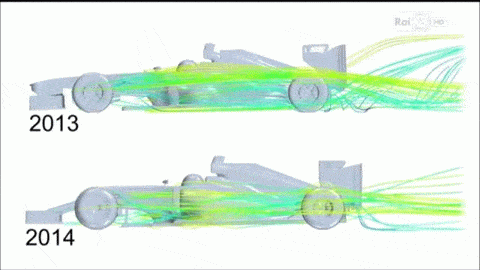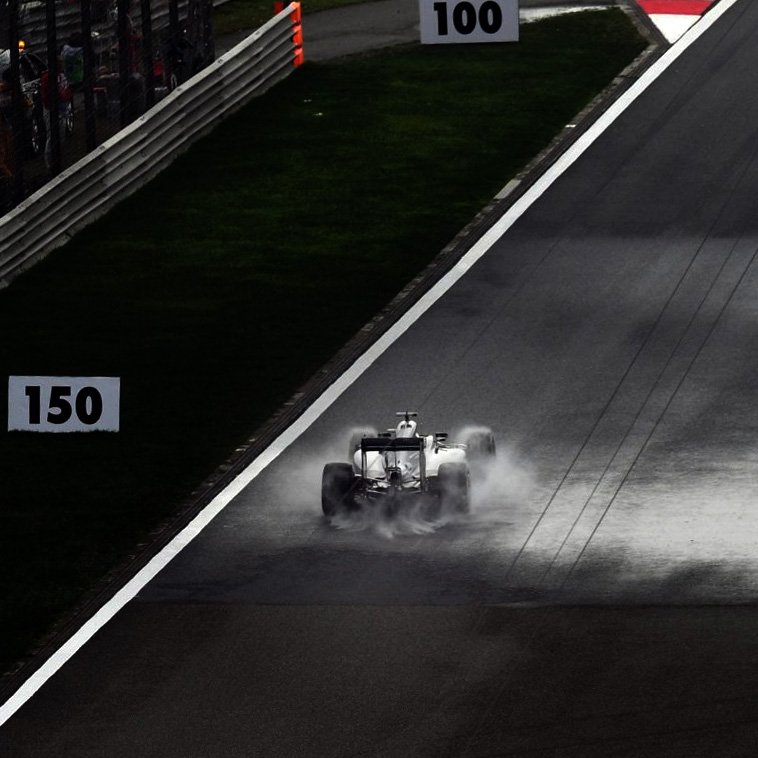grandprix.com, Oct 1, 2008 wrote:[...]
The Technical Working Group met to discuss the question [of overtaking] that autumn. All the teams sent technical directors, seniors engineer and aerodynamicists. There were thus 25 opinions to be heard (as Prodrive was still planning to enter F1 at that point and Super Aguri was still in business). The meeting was chaired by Charlie Whiting and after hours of different opinions he decided that it was a pointless exercise. He concluded that the only way forward was to create a sub-group and allow only the top three teams to be represented. Ferrari, Renault and McLaren were each invited to nominate a representative. Thus was born the Overtaking Working Group (OWG).
Pat Symonds of Renault, Rory Byrne of Ferrari and Paddy Lowe of McLaren were all well-established engineers of repute and all were keen to get the job done using commonsense and a scientific approach. The OWG met for the first time in January 2007. They cut straight to the chase. They defined the downforce targets they were looking to achieve and the character of the aerodynamics that was required to improve overtaking. Whiting provided data which had been averaged out from information he had been given by all the teams. The aim was make the cars five seconds a lap slower, but they had to factor in other progress and the reintroduction of slick tyres, planned for 2009. This meant that the OWG was looking for very significant changes. The conclusion was that they needed to reduce downforce by 50 per cent while retaining similar drag coefficients to the 2006 car.
The first move was to use McLaren's highly advanced simulator to establish baseline aerodynamic performance parameters. McLaren test driver Pedro de la Rosa was called in to 'drive' the simulator and after recording a series of different laps with different settings it was determined that in order to overtake going into Turn 1 [at Barcelona] he would need to have a car that was two seconds a lap quicker than the one in front. The engineers paid great attention to de la Rosa's comments. He would try each configuration and report on whether the resulting set-up would allow him to attempt to pass or not. Halving the downforce meant that the necessary 'overtaking advantage' figure could be reduced to 1.5s a lap and the work then moved on to finding ways to balance the following car to reduce the necessary 'overtaking advantage' to a second. The three engineers all agreed that this was a realistic figure, rather than trying to make it even easier to overtake.
At the same time that this was going on Symonds was sent off to talk money out of Renault team principal Flavio Briatore and the other 11 team bosses. The result was a budget of half a million Euros. The trio had agreed that they should use Fondtech to do windtunnel work for them and that they did not want to place too much faith in CFD. It was an interesting technology but it was not ready for this kind of work as it was not possible to use CFD to study unstable behaviour of the air behind a car. The McLaren simulator, which represented 30man/years of development proved a far more flexible tool than other simulations and used a real driver (Pedro) to get a subjective view.
Once they had established the basic data and the targets required, the OWG asked Fondtech to devise means by which the desired changes might be achieved. Ferrari provided baseline data for the two models that Fondtech ran in tandem in its 25 per cent moving ground wind tunnel. They in turn had drawn on an experiment by Ferrari at Monza in 2004, when it ran two cars in tandem round the autodromo. This full-scale Ferrari data was used to validate the twin model behaviour in the tunnel, in turn to validate the entire experimental technique. This was a very important step, that justified the use of tunnel rather than CFD.
Between March and September 2007 there were several sessions in the wind tunnel, with Byrne doing much of the hands-on work and all sorts of ideas were investigated. The final configuration pretty much hit its targets though baseline drag fell by 10 per cent.
The next step was to feed the actual data back into the McLaren simulator in order to compare it with the baseline model that had been established. De la Rosa confirmed the benefits in terms of improved chances to overtake. The OWG made its presentations to the TWG in October 2007 and the teams agreed to accept them.
What was interesting was that by using a scientific approach to the problem it became clear that previous attempts to solve the problem had in reality made things worse.
"Almost all of the attempts to reduce downforce in the recent past have been retrograde in terms of overtaking possibilities and wake behaviour," one member of the OWG said. "If we had wanted to make overtaking chances worse, that was what we would have come up with."
One of the most significant findings was that the rear wing is a very important device in characterising the wake that a car generates.
"You would think that upwash from the rear wing is bad," Lowe said. "The upwash is strong, but a very strong inwash at ground level is also driven by the rear wing. That inwash brings new high-energy air in at ground level. If you took the rear wing off altogether you would lose that effect and the wake would be a lot worse."
The OWG found that a 75 per cent narrower and 150 mm higher rear wing would optimise the new air.
Nick Wirth's computational fluid dynamics (CFD)-generated rear wing had eliminated the central section altogether, effectively comprising instead two separate rear wings, to eliminate the upwash, but the OWG concluded that this was the very reason that it did not work.
Having determined the best possible rear wing configuration to generate the least damaging wake, the OWG moved on to determine the optimum front wing and floor for the following car. Lots of different floor shapes were tried, including underbody tunnels and other radical ideas, but the OWG found that the best solution was similar to that on the current cars, but with the diffuser section mounted further back to use more of the benefit of the inwash.
The front wing will thus be lowered and, at 1800 mm, will be 400 mm wider than on the 2008 car. The most important point, however, is that the aerodynamic profile of the central section of the front wing will be fixed so that it remains neutral and does not generate downforce. This is because the central section of the wing is the most badly affected by the central upwash of the wake, and is the last part of the wing to receive the fresh high-energy air from the ground level inwash. By disabling this section, this effect is eliminated. Conversely, the wider outboard and lower extremities of the new front wings benefit more from the high-energy inwash air. This all helps to maintain the downforce and thus to manage the following car's balance better while it is running in a wake of the car in front.
[...]








